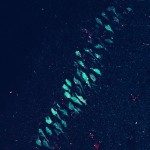Link to Pubmed [PMID] – 23413376
Stem Cells Transl Med 2013 Mar;2(3):167-74
Human induced pluripotent stem cells (iPSCs) offer hope for personalized regenerative cell therapy in amyotrophic lateral sclerosis (ALS). We analyzed the fate of human iPSC-derived neural progenitors transplanted into the spinal cord of wild-type and transgenic rats carrying a human mutated SOD1(G93A) gene. The aim was to follow survival and differentiation of human neural progenitors until day 60 post-transplantation in two different in vivo environments, one being ALS-like. iPSC-derived neural progenitors efficiently engrafted in the adult spinal cord and survived at high numbers. Different neural progenitor, astroglial, and neuronal markers indicated that, over time, the transplanted nestin-positive cells differentiated into cells displaying a neuronal phenotype in both wild-type and transgenic SOD1 rats. Although a transient microglial phenotype was detected at day 15, astroglial staining was negative in engrafted cells from day 1 to day 60. At day 30, differentiation toward a neuronal phenotype was identified, which was further established at day 60 by the expression of the neuronal marker MAP2. A specification process into motoneuron-like structures was evidenced in the ventral horns in both wild-type and SOD1 rats. Our results demonstrate proof-of-principle of survival and differentiation of human iPSC-derived neural progenitors in in vivo ALS environment, offering perspectives for the use of iPSC-based therapy in ALS.
